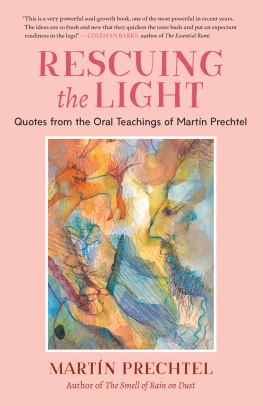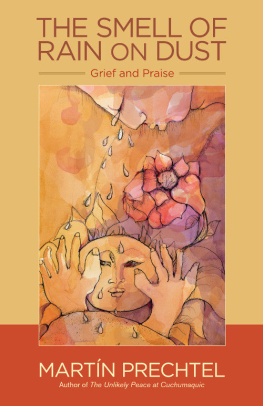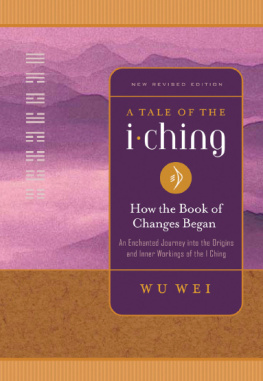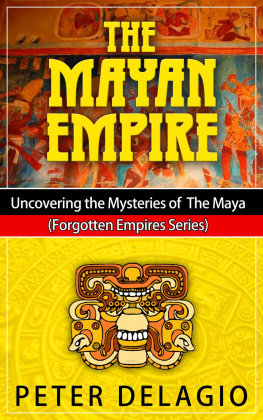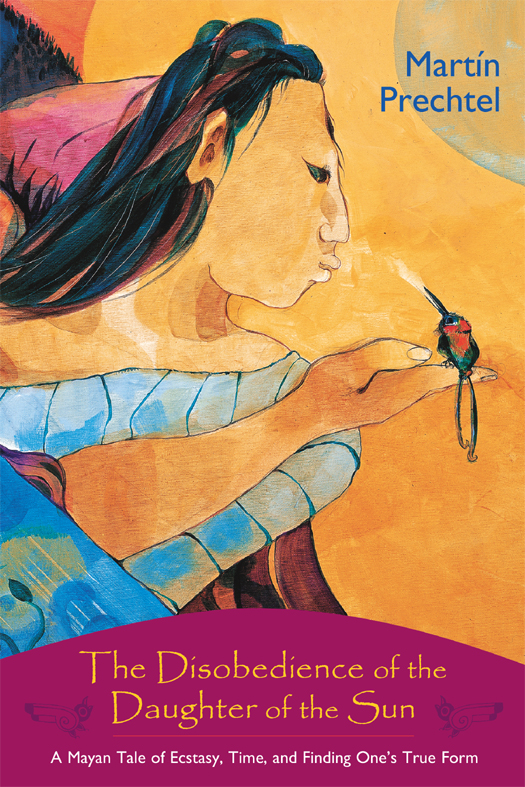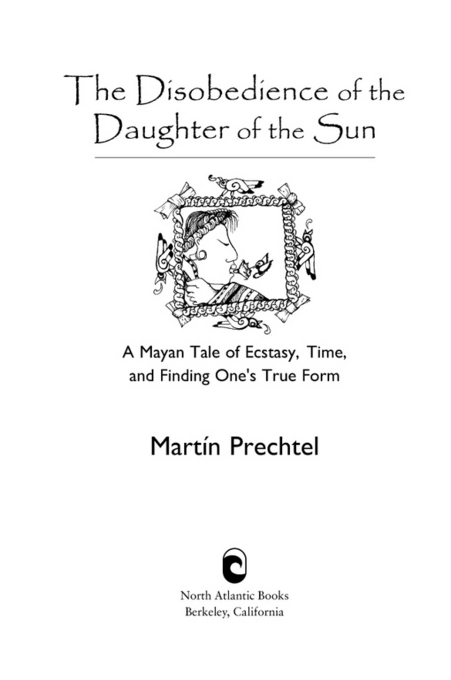Other books by Martn Prechtel
Secrets of the Talking Jaguar
Long Life, Honey in the Heart
Stealing Benefacios Roses
The Unlikely Peace at Cuchumaquic
Copyright 2001, 2005 by Martn Prechtel. All rights reserved. No portion of this book, except for brief review, may be reproduced, stored in a retrieval system, or transmitted in any form or by any meanselectronic, mechanical, photocopying, recording, or otherwisewithout the written permission of the publisher. For information contact North Atlantic Books.
Published by
North Atlantic Books
P.O. Box 12327
Berkeley, California 94712
Cover and interior art by Martn Prechtel
Cover design by Suzanne Albertson
First published in 2001 by Yellow Moon Press
The Disobedience of the Daughter of the Sun: A Mayan Tale of Ecstasy, Time, and Finding Ones True Form is sponsored by the Society for the Study of Native Arts and Sciences, a nonprofit educational corporation whose goals are to develop an educational and cross-cultural perspective linking various scientific, social, and artistic fields; to nurture a holistic view of arts, sciences, humanities, and healing; and to publish and distribute literature on the relationship of mind, body, and nature.
North Atlantic Books publications are available through most bookstores. For further information, call 800-733-3000 or visit our website at www.northatlanticbooks.com.
The Library of Congress has cataloged the printed edition as follows: Prechtel, Martn.
The disobedience of the daughter of the sun : a Mayan tale of ecstasy, time, and finding ones true form / by Martn Prechtel.
p. cm.
Sponsored by the Society for the Study of Native Arts and SciencesT.p. verso. Summary: The retelling of a seminal Mayan tale, with layered commentaries from the author leading the reader to an understanding of the sacred storys deeper meanings and its relevance for contemporary societyProvided by the publisher.
eISBN: 978-1-58394-830-9
1. MayasFolklore. I. Society for the Study of Native Arts and Sciences. II. Title.
F1435.3.F6P74 2005
398.20899742dc22
2005011407
v3.1

CONTENTS
Introduction
The Urgency of Water
The Old Village Friend
Some Suggestions on How to Read this Book
First Layer: Iridescent Tail Feathers
The Outer Wrappings of the Story
Second Layer: In a Net of Stars
The Indigenous Understanding
Third Layer
Ecstasy and Time
Fourth Layer
Never-Before-Seen Bird
Fifth Layer: The Ecstatic Voice
A Revolution of the Watery Soul
For the Watery Soul

Introduction
The Urgency of Water
T here are stories, other stories and still different stories; there are myths, legends, fairy tales, folktales and many others. Who could say what kind of story this, The Disobedience of the Daughter of the Sun, might be?
Kept alive for centuries in the Guatemalan highlands by the Tzutujil Maya from the village of Santiago Atitlan, this story and others like it are not the regular stories. They are not the easy stories; they are not folktales. Perhaps they are mythological, but on the other hand, theyre not that either. They are the special stories.
What can be said about them is that they are alive, and being alive they are not just told at any time, but only in the dark. Though everyone by a certain age knows a version of these living stories, only certain people, those accepted storytellers, can tell them and will admit to their knowledge of them, for it is in the telling only that these stories live, and being ancient, big and hungry, they must be brought alive well.
Another thing that we could say is that these stories are from the other world, the invisible world, the world of life-giving spirit out of which these types of stories come clicking and clanking as bare bony frames of themselves until the storyteller, the word maker, Bney Tzij, refleshes each story, re-membering it back to life using the everyday life of the village world to dress the bones.
Like an exquisite reoccurring dream whose origins are lost and foggy upon our awaking, whose ending is the beginning of the next dream, these old Mayan stories, though told over and again, always have their beginnings in a previous tale while their endings are in themselves the cliffhanger beginnings of another story to be related at a different time.
After years of listening, a young person learns to recognize her life in the stories and is guided through life by the piloting examples they contain. After becoming an adult, one realizes that there really is only a single, huge, hidden story trunk of which all the others are only magnificent branches, leaves or fruit.
The tales like The Daughter of the Sun are the cherished home-style versions of otherwise very sacred mythologies, the kind that are told in the home, outside the ritual cloistering of initiations and such. Though not taboo, they are shown the same great respect as living heroes. And like all villagers, who visit only after the days work is done and the sun is down, the story visits only at night and mostly in the dry season between November and April, known as the nighttime of the year. The usual time to hear these tales outside the ritual space occurs after the extended family is lying about the central hut having recovered their breath and composure from the iron-smelting, steam-cleaning heat of the weekly touj, or steam bath, all of which occurs after dusk before midnight.
Like everywhere in the world, it is the old-time people who are gently courted and coaxed into volunteering one of these many traditional tales after the bath and cold feast that follows.
When first living in the village of Santiago Atitlan, as I did for so many years, I loved the ritual bathing in the fierce heat of the touj, and afterwards eating lime-soaked fish and corn cakes, then leaning back with the glowing and happy clan of my ex-wifes family to listen to one of the older uncles bring life to one of these stories.
I was greatly disappointed, though, because I never got to hear the ends of any of the sixty or so ancient mythic tales on account of the relaxing effects of the sweat house, late-hour food and the lulling effects of the old storyteller, which would consistently put the whole household, including myself, into a sound sleep right where we were lounging. Sometimes even the storyteller, his head thrown back, would still be snoring loudly at dawn by the ashed-over embers of the previous evenings cooking fire while the rest of the village roused itself for work.
In a determined mission to hear the final episodes of those stories, I avoided the relaxing sweathouse for awhile, slept late into the morning of the night it was planned, and drank several pots of good Guatemalan coffee just before the storytelling took off. It was a hopeless effort, for in every instance, by the time the Sun Father had crowned his rosy head out of the nights horizon in the east, the tale had still not finished. Because stories like these are not told while the Father watches, meaning the sun is up, the storyteller would have to stop talking, courteously excuse himself and in a state of unfair exhaustion accrued in his old bones by my greed and unwitting ignorance, drag himself home to the days challenge.




